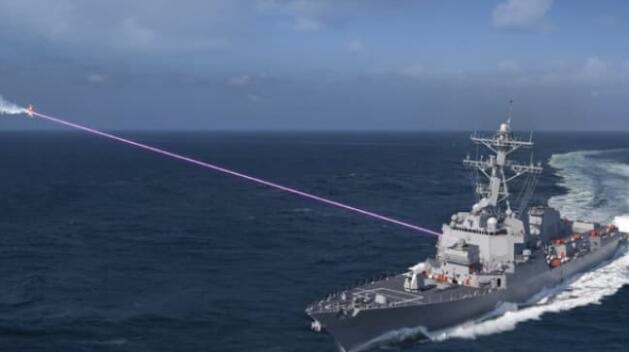Navy to Develop Laser that can Destroy Small Boats
The U.S. Navy is developing a laser weapon system that can destroy small boats and hostile drones, as well as provide long-range counterintelligence and surveillance. The first system is scheduled to be installed on a guided missile destroyer sometime in 2020
The United States Navy is moving forward with a new laser weapon system that can “disable” or “destroy” small boats or hostile drones. Lockheed Martin is responsible for developing a system that can strike multiple targets at the speed of light in an ever-changing world of warfare.
The Department of Defense has awarded Lockheed Martin a $150 million contract to develop different types of laser systems that will be installed and tested on the guided-missile destroyer Arleigh Burke (DDG-51), which is the lead ship in a class of 60 destroyers.
The laser system is called a High Energy Laser and Integrated Optical-dazzler with Surveillance (HELIOS) system, which will be fixed on surface ships. Lockheed Martin vice president Michele Evans, the general manager of the company’s Integrated Warfare Systems and Sensors, said this one-of-a-kind weapon helps add another layer to the Navy’s defense capabilities.
“The HELIOS program is the first of its kind, and brings together laser weapon, long-range ISR and counter-UAS capabilities, dramatically increasing the situational awareness and layered defense options available to the U.S. Navy,” Evans said in a statement. “This is a true system of capabilities, and we’re honored the Navy trusted Lockheed Martin to be a part of fielding these robust systems to the fleet.”
The laser system will actually combine different capabilities, from destroying attack boats to conducting long-range surveillance and counterintelligence, according to Lockheed Martin’s website.
One part is a high-energy laser system that can knock out hostile drones or small boats, with the ability to disable or destroy them, using 60-150 kilowatts of steady power, according to IEEE Technology. Second, there is long-range capability for intelligence, surveillance and reconnaissance (ISR). A third portion of the weapon will be designed to counter unmanned aerial systems. This includes using sensors to confuse cameras and other optics on unmanned drones and other flying objects.
Once the Laser Weapons System (LaWS) is developed and installed on the Arleigh Burke by 2020, there will be multi-layered testing of the system, from cooling, maintenance, how much of the ship’s power it would take and how it would integrate with the rest of the ship’s weapons, whether it’s guided missiles or the Close-In Weapon System (CIWS) also known as the Phalanx — or the R2D2 to those in the fleet.
The LaWS on the Arleigh Burke is scheduled for battle testing by 2021, according to the U.S. Naval Institute.
Rear Adm. Ron Boxall said it’s imperative for the Navy to move forward with LaWS to continue leading the world in cutting-edge warfare.
“We are going to burn the boats if you will and move forward with this technology,” Boxall said in the Naval Institute report. “The problem I have today is the integration of that system into my existing combat system. If I’m going to burn the boats, I’m going to replace something I have today with that system doing that mission with these weapons. If I have this system that can kill and I have a system that can actually sense, then I have to make sure it integrates with the other things I have on my ship that can sense and kill, namely the Aegis weapon system.”
Boxall called it a “crawl, walk, run approach,” meaning to start on a simplistic level and working its way up to more sophisticated laser warfare defense.
This isn’t the Navy’s first foray into using laser systems aboard a surface ship. In 2014, the Navy implemented a 20-kilowatt system on the USS Ponce, a former amphibious port dock ship that has since been decommissioned. That system was designed to deter small boats and drones.


